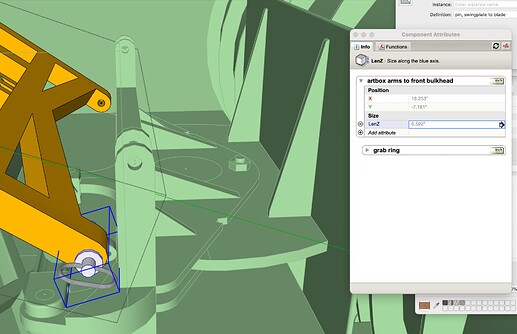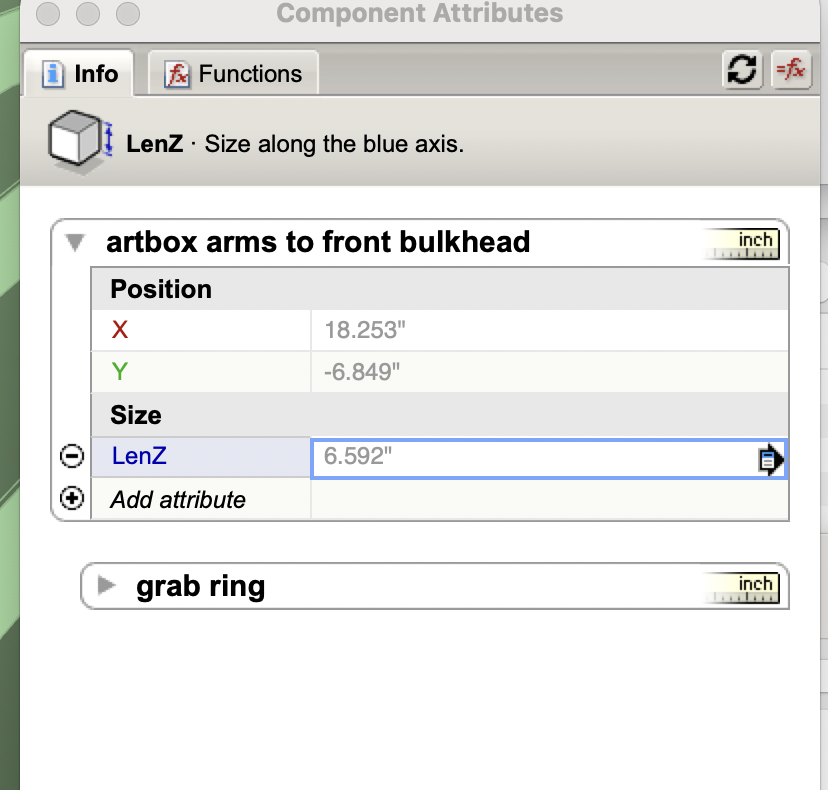Haven’t looked at Polar Coordinates yet. Would that be something like plotting waypoints then having the object move through those waypoints rapidly - to resemble an animation? Well I’ll take a look a it.
Not familiar with Jack or what he said.
But the nesting order you describe is the only way that makes sense. Whether it’s a human arm, an excavator, or a snowplow attachment. Mike Wayzovski suggested the opposite, which I couldn’t make sense of. The blade (SwingMass) is the last thing in the collection of parts that has to move. It’s relationship with the front bulkhead is downstream of it.
I have onClicks at different levels. There’s one at LiftArtBoxAndCylinder, and the other is at SwingMassAndCylinder which is 2 levels deeper and in a different branch. See why I’m so confused?
What I ended up doing is grouping SwingMass and FrontBulkhead. Of THAT group I made the axes origin at the ArtBox arms aft pin, while leaving those two (now children) origined at the front pin. I rotated the GROUP at the aft pin while giving the children the opposite rotation values about the front pin. Made for a lengthy onClick statement, but it did work. Passing the values through the ether across the nesting levels was an Alice in Wonderland journey. I just had to figure it out.
At some point shortly thereafter I moved SwingMass to be a child of FrontBulkhead, and the values transfered with it. At least I think that’s what happened. I tried so many different ways to do this today, I’m actually not clear what happened there at the end. It’s still hard to wrap my head around. That’s why I need to stay engaged with these dynamic components and work through more projects.
As I told Mike, I struggle with the “interface”, but it’s slowly getting easier with more exposure. Relationships and all that. What just shows a value and in other cases what references that value. Just need practice. Though I AM warming up to the concept of passing values upstream / downstream via what I’m calling proxies or relays. And since that procedure is apparently what’s necessary with a complex model, then it’s a good thing I’m finally getting it.
Not sure why I jumped into the deep end of this pool, but it does have a tendency to make you learn to swim real fast.
Soon as I massage some extraneous geometry out of this model I’ll share it back to this thread. Thanks for chiming in. I’ll check out the Polar Coordinates.






